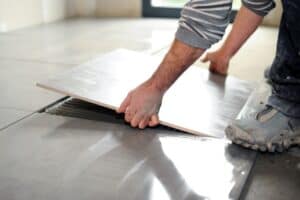Los Angeles Bathtub Reglazing
Kitchen countertops are an essential part of any home. They serve as a functional space for preparing meals, hosting gatherings, and adding to the overall aesthetics of the kitchen. However, over time, countertops may lose their shine, develop scratches, or become stained, making them look dull and unattractive. In such cases, professional refinishing can restore the countertop to its former glory without having to replace it entirely. But how does a professional prepare a kitchen countertop for refinishing without damaging it?
(Searching for “Professional Countertop Refinishing Service”? Contact us today!)
Step 1: Evaluate the Condition of the Countertop The first step in preparing a kitchen countertop for refinishing is to evaluate its condition. The professional will inspect the countertop for any visible damage, such as cracks, chips, or deep scratches, and determine if it needs any repairs before refinishing. They will also check for stains and discolorations that need to be removed before refinishing can begin.
Step 2: Clean the Countertop After evaluating the countertop’s condition, the professional will start the cleaning process. They will first remove any surface debris, such as crumbs or dust, using a soft cloth or brush. Next, they will use mild cleaner and warm water to remove any grease, oil, or grime buildup. For tougher stains, they may use a specialty cleaner or a solvent that is safe for the countertop material.
Step 3: Sand the Countertop Once the countertop is clean and dry, the professional will start sanding it. Sanding is essential to ensure that the refinishing material adheres well to the surface. They will use fine-grit sandpaper to remove any surface scratches, blemishes, or stains. However, the sandpaper should not be too abrasive, as it can damage the countertop’s surface. The professional will use a light touch and work in a circular motion to achieve an even finish.
Step 4: Repair Any Damage If the countertop has any visible damage, such as cracks, chips, or deep scratches, the professional will repair them at this stage. They will use a special epoxy filler or resin to fill the gaps and smooth out the surface. Once the filler dries, they will sand it down to achieve a seamless finish.
Step 5: Mask Off the Surrounding Areas Before applying any refinishing material, the professional will mask off the surrounding areas, such as cabinets, walls, and appliances, to protect them from overspray. They will use plastic sheeting and painter’s tape to cover the areas that need protection.
Step 6: Apply the Refinishing Material Finally, the professional will apply the refinishing material. There are different types of refinishing materials available, depending on the countertop material. For example, if the countertop is made of laminate, they may use a special laminate refinishing kit that includes a primer, paint, and topcoat. If the countertop is made of stone, they may use stone spray paint or specialized refinishing material.
The professional will apply the refinishing material in thin layers, using a spray gun or a roller. They will ensure that each layer is even and smooth and allow it to dry completely before applying the next layer. Once the final layer is applied and dry, they will remove the masking tape and plastic sheeting.
In conclusion, professional countertop refinishing can restore the look and functionality of a kitchen countertop without having to replace it entirely. However, preparing the countertop for refinishing requires careful evaluation, cleaning, sanding, and repair, followed by the application of the appropriate refinishing material. By following these steps, a professional can prepare a kitchen countertop for refinishing without damaging it and achieve a seamless, attractive finish.
